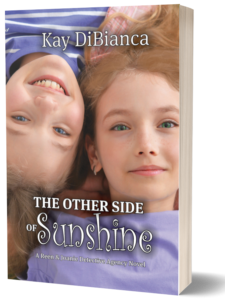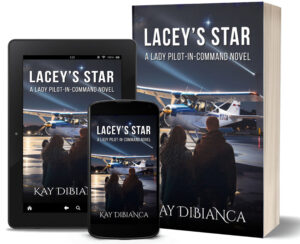
by Debbie Burke
@burke_writer
Since 2008, Buggz Ironman-Whitecow has been in a Montana prison for a homicide he did not commit. Racism against Native-Americans led to his arrest and prosecution. Evidence that should have cleared him was withheld or falsified as wrongdoers scrambled to cover up the truth.
Buggz had one stroke of good luck: he is represented by attorney Phyllis Quatman, a dogged advocate determined to free him.
Phyllis is my good friend and critique partner. I asked her to write a guest post about this case that is a true crime within the justice system.
Note: the crime scene photos are graphic and disturbing. For that reason they are not included in this post. They are available to view at this link.
Here’s Phyllis’s story:
WHAT’S WRONG WITH THIS PICTURE?
For 35 years, I’ve been an attorney who worked both as a prosecutor and defense lawyer. Evidence is the Holy Grail in criminal law and carries the day. A single photograph taken at a 2006 homicide scene is clear evidence that proves the innocence of my Native-American client, Buggz Ironman-Whitecow. Yet Buggz has been in prison since 2008.
Why?
I became his defense counsel five years after his 2008 conviction. My original job was to seek post-conviction relief for the excessive sentence of 65 years in a homicide with no pre-meditation and weak, questionable evidence. But investigation of that evidence led to a shocking conclusion that official negligence and misconduct had been covered up.
The victim was Lloyd “Lucky” Kvelstad, a poor white transient who, during a winter night when the temperature dropped to seven degrees, joined a group of Native Americans in a Havre, Montana ‘flop house’. Although the house had no heat, it served as a hangout for local substance abusers. A great deal of alcohol was consumed, and a fight broke out among several people there. .
At trial in 2008, prosecutors alleged Buggz had caused Lucky’s death during the fight.
At 1:20 a.m. on November 25, 2006, police and EMTs arrived on scene. Lucky was lying on the floor, face down, with head injuries. At trial, they admitted they never treated Lucky, never rolled him over, never tried to revive him, or even listen for breath. They announced he was dead and left.
The pathologist who performed Lucky’s autopsy testified the head injuries were not serious enough to have killed him. The pathologist also could not find a cause of death to a medical certainty.
Metadata on crime scene photos showed his body’s location and position were not the same as initial witnesses had stated and their diagrams showed. He had moved two feet forward after first responders left. This detail proved key.
Around 4:25 a.m., police video shows the officers rolling Lucky over. His body shows no lividity, no rigor mortis, and fresh urine on his thigh. One officer commented on the urine and the other officer said, “I wonder if this guy … didn’t die right away?” The video suddenly cuts away.
That last officer wrote in his report and testified that at 4:45 a.m. he bagged Lucky’s head with a brown paper bag and taped it around Lucky’s neck. He left the scene to go to the police department, then returned to the scene. At 5:15 a.m., someone called for the coroner. At 6 a.m., the coroner arrived and found … no lividity, little if any rigor mortis, and that Lucky’s arms were warm to the touch. He stated there was no bag on Lucky’s head which is how he could describe Lucky’s facial injuries.
Photo 42 was among 100 crime scene photos the prosecution had produced on a discovery CD back in January 2007.
Photo 42 provided my first clue that Buggz was innocent.
According to the police, it represents the first picture taken of Lucky at the crime scene and ostensibly depicts exactly how and where the officers found him just after 1:20 in the morning.
Metadata on that CD revealed suspicious discrepancies:
(1) While the police and EMTs arrived on scene around 1:20 a.m., no crime scene photos were taken until Photo 42 was shot at 3:47 a.m., more than two hours after those first responders arrived;
(2) Of those 100 photos, somebody duplicated eight of them, renamed them, and scattered those 16 replicas into the 100 disseminated to the defense just after the homicide;
(3) Somebody also added 23 photos at the beginning of that discovery CD, and the metadata showed they were taken between 9:18 and 9:38 a.m., more than nine hours after the police came on scene;
(4) Those 23 photos were a different size than the others and taken with a different camera.
In other words, all 100 photos on that discovery CD had been rearranged, renamed, or altered.
What happened to the ones that should have been there, like photos of Lucky lying in situ in his original position at 1:20 a.m., or ones an officer wrote he took at 2:38 a.m. in the kitchen?
Missing.
Photo 42 shows Lucky lying in a different location and position, the key detail noted above.
Years later when I took over Buggz’s case, Photo 42 triggered an alarm in my lawyer brain.
Dr. Gordon Giesbrecht, our renowned expert witness, concluded that Lucky was not dead when the cops left him alone on the floor, but likely hypothermic and drunk. That explained their inability to detect a pulse. He posited that Lucky arrived at his location in Photo 42 either because someone moved him there, or because he crawled forward two feet over a two-hour period. Since everyone agreed that no one moved or touched Lucky, and witnesses at the time swore Lucky was lying prone where they described and drew in their diagrams, it seemed like Photo 42 proved Lucky moved after the police and EMTs left him for dead.
Add to that the condition of his body on the crime scene video at 4:30 a.m. and the coroner’s findings at 6 a.m., and it seems clear Lucky didn’t die until much later than the 12:30 a.m. time of death the police alleged.
Indeed, Dr. Giesbrecht concluded that Lucky, had he been warmed up and treated, would have lived. But by failing to treat him, the EMTs and cops were negligent at best. When they inexplicably bagged his head at 4:45 a.m., they caused his death from hypoxia, or lack of oxygen.
Could their own exposure to civil and criminal liability cause these officers and EMTs to fabricate evidence from a crime scene and enact a massive coverup to divert attention away from their own guilt and toward Buggz Ironman-Whitecow?
I’ve spent the last 12 years, trying to get that damning evidence of a coverup before an unbiased judge. But that’s easier said than done. Montana is a large state with a small population where, in the legal and law enforcement world, everyone knows everyone. Officers and prosecutors involved in Buggz’s original homicide trial in 2008 moved up to higher positions of influence. Three became judges. The Attorney General at the time became Chief Justice on the Montana Supreme Court.
My repeated motions and requests for a new trial to present this evidence have been denied or ignored.
Meanwhile, Buggz has languished in prison for 18 years, yet has not lost faith that his innocence will be proved.
Thwarted by the legal system, I wrote the true crime memoir, Innocent Behind Bars-The True Story of Buggz Ironman-Whitecow, and created a website, The Free Buggz Project. All evidence is laid out in the website, including photos, crime scene video, trial and hearing transcripts, case files, and more.
My goal is to generate sufficient public interest and outcry that Buggz will receive a new trial. I invite you to review the evidence for yourself. If you conclude, as I did, that Lucky Kvelstad was not murdered by Buggz but died due to negligence and official misconduct, I ask your help in contacting independent agencies and courts to reverse this injustice.

Attorney Phyllis Quatman
Book sales link: Innocent Behind Bars-The True Story of Buggz Ironman-Whitecow.
Website link: freebuggzproject.com
Read more about author Phyllis Quatman.
~~~
Thank you, Phyllis!
TKZers, Phyllis is happy to answer questions in the comments.









 Coming Soon!
Coming Soon! 








 Readers and movie viewers typically don’t take comic villains seriously because they’re often lousy criminals. They’re buffoons whose sloppy schemes go awry. Their supposedly clever strategies explode in their faces. Their mistakes get them knocked on their butts.
Readers and movie viewers typically don’t take comic villains seriously because they’re often lousy criminals. They’re buffoons whose sloppy schemes go awry. Their supposedly clever strategies explode in their faces. Their mistakes get them knocked on their butts. 


